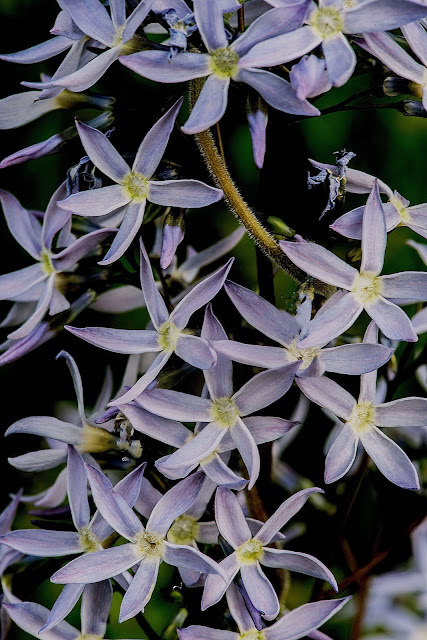Eastern bluestar
EASTERN BLUESTAR
Amsonia
tabernaemontana Walter
Dogbane Family
(Apocynaceae)
Submitted by Roger Hammer
 |
| Eastern Bluestar, Rover Hammer, roadside ditch along SR65 near Apalachicola. |
This perennial
wildflower reaches 3' tall with smooth stems and lanceolate to elliptic leaves
from 3–4" long and ¾"–1" wide (the uppermost leaves are
sessile). It can form large, multi-stemmed clumps and is easy to see when in
flower. Pale blue, ¾", star-shaped flowers are in terminal clusters.
Flowering season begins in March and lasts into August so look for it in the
floodplain forests of the Florida panhandle east to Columbia, Alachua, and Levy
Counties. It ranges across the eastern United States to Texas, Oklahoma, and
Kansas, and is on its southern range extension in Florida.
Amsonia commemorates English physician John Amson
(1698–1763) who moved to Virginia and was mayor of Williamsburg from 1750–1751.
The name tabernaemontana honors Jacob Theodor von Bergzabern
(1520–1590), who changed his name to Jakobus Theodorus Tabernaemontanus
(literally “tavern in the mountains”). This species is sometimes cultivated and
excels when planted in moist, loamy soils in sunny or partly shaded locations.
Fringed bluestar (Amsonia ciliata) has short-petiolate upper leaves.
Seeds germinate
quickly and will flower the second year.
Roger is a member of the FNPS Dade Chapter and is currently working on a new Falcon Guide titled Complete Guide to Florida Wildflowers, due to be released in Spring 2018. His other wildflower guides include Florida Keys Wildflowers (2004), Everglades Wildflowers (2nd edition, 2014), and Central Florida Wildflowers (2016).
__________________________________________________________
Other links:
USF Plant Atlas: Amsonia tabernaemontana
FNPS, Plants for your Area: Eastern Bluestar
Native Florida Wildflowers: Eastern Bluestar



Comments